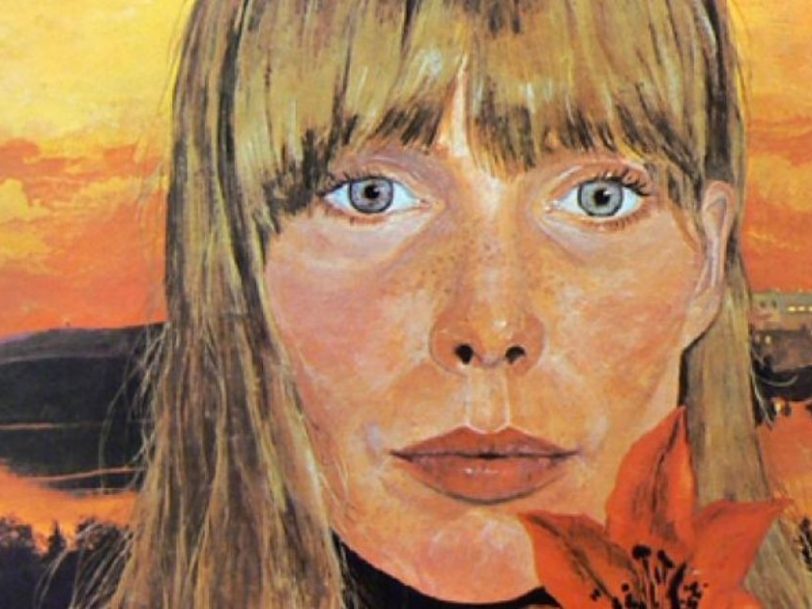The red flower Joni Mitchell is pictured holding on the cover of 1969’s Clouds, her second album, is a prairie lily. It is the floral emblem of Saskatchewan, the Canadian province where Mitchell had spent her early years, and where she cut her teeth as a performer. The prairie lily is not only beautiful; its bulb is edible, and has been used for centuries for food and medicine. Like the prairie lily, Mitchell’s songs are not only lovely things: they are infused with wisdom. Like her pose in the painting, Mitchell is holding her songs to us, with serious intent. Her eyes are clear and her gaze steady.
Listen to ‘Clouds’ here.
After releasing her 1968 debut album, Song To A Seagull, Joni Mitchell had learned a few things. The first was that the songs she had toured around small clubs and coffeehouses really worked on record. The second was that they worked for her on record, and not just for those artists more famous than her – such as Judy Collins and Tom Rush – who had covered her songs. The third lesson was that one of her greatest strengths was in her vulnerability; just as she would commonly fix on one person in the audience when she performed, the more specific and personal her songs were, the greater universality they seemed to achieve. And, finally, she had learned a few things about production. Anyone trying to steer Mitchell in a direction she was unsure of had better be ready for a fight.
“A producer is a babysitter. A producer is an interior decorator”
Clouds is the product of all these lessons. There is a more confident air to her song choices; Mitchell knew she could deliver them and – unlike on her first album – did not refuse to record some of her finest material simply because someone had already covered it. Both Sides, Now, one of the best Joni Mitchell songs, closed the original vinyl album’s second side, and gives the record its title. Mitchell didn’t care that Judy Collins had already had an enormous hit with it. Joni knew that Judy Collins wasn’t her.




